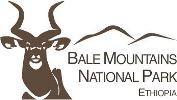Culture & History
The Bale Mountains are the ancestral home of the Oromo, the largest, single ethnic group in Africa. Living as pastoralists and farmers, the population grew quickly and expanded to different corners of the country in the beginning of the 16th century.
Little is known about the Oromo people of the area and how they settled here. They are part of the eastern Cushitic people stemming from a branch of the Caucasoid race (which includes Western Asians, Arabs and Europeans), and are distributed from Shoa in Ethiopia’s north, to Mombasa in Kenya to the south. Some 3,000 years ago, they passed on practices – such as the initiation ceremony of circumcision and the habit of not eating fish – to the Nilotic peoples in the West. Furthermore, they incorporated ideas of the Gada system and cattle husbandry into their own society. The Gada system is based on the principles of classifying a society into 11 functional grades, each of which has its own special roles and status.
Currently, people subsist mainly on agriculture. They follow a traditional transhumance system known as the Godantu system, a key feature of traditional human use of the Bale Mountains. In this system livestock, particularly cattle, are sent to higher grazing grounds during the months when crops are growing in lower altitudes, or into the forest for shade during the dry season. However, this should not be confused with the cattle movements that are a consequence of the loss of grazing land outside of the park, thus forcing cattle into the park to graze.
Bale houses are circular in shape and locally referred to as mana citaa. Juniper and sometimes eucalyptus are used to make the walls and roofs. The roof is covered with thatched grass cut from citaa (tussock grass) or stubble, specifically barley, and supported by a wooden pillar, which stands in the middle of the floor. The house is divided into portions by walls made of bamboo or mud mixed with barley or grass stubble.
Population
The population of the Bale zone is approximately 1.5 million. The town of Robe is about 48,000, Goba 33,000 and the Dinsho Woreda (district) 40,000. The people of the region are predominantly Oromo-speaking farmers and cattle herders. Famed for their equestrian skills, they are often seen galloping atop their horses across the wide-open country – a stirring and romantic spectacle.
Language
Afan Oromo is the official language of the Oromo people. It belongs to the Cushitic language family, and serves as a sort of lingua franca for over 25 million Oromos. However, most of the people in the Bale Mountains also speak some Amharic.
Religion
The predominant religion in the Bale Mountains is Muslim (77 percent), followed by Orthodox Christian (20 percent) and Protestant (one percent).

